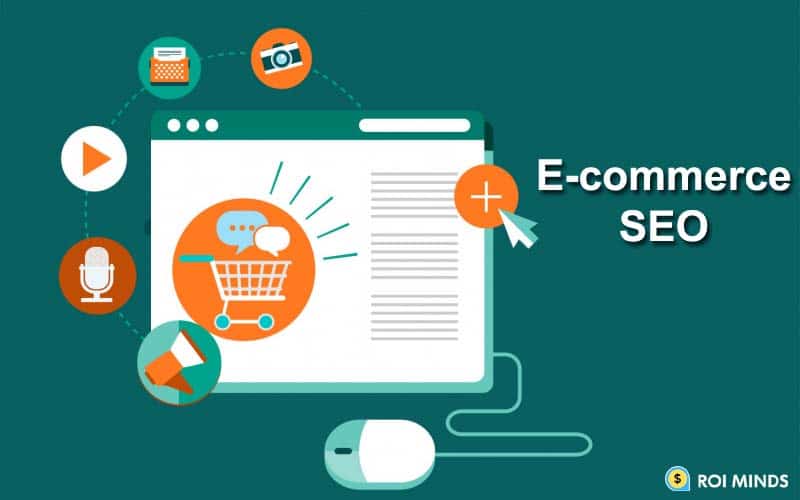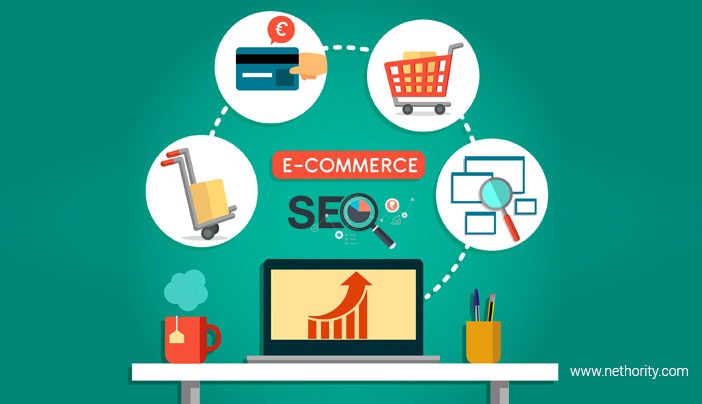
39% of ECommerce traffic is from online searches. Increased visibility in search engines gives your site better traffic and this could lead to plenty of conversions. Ranking exceptionally well can point individuals to your site when they go look for products that you sell. This shows how SEO is like magic in transforming businesses from being small-scale enterprises to well-known ones.
SEO these days is not a choice but rather a necessity. Not doing SEO when engaging in eCommerce business will have you lagging behind. You need to tick all items on an SEO checklist, if this is what it takes, to ensure that what you are doing increases the quality and quantity of traffic and be visible in order to stay ahead in the competition.
More than a popular tactic in better search engine rankings, many people fail to recognize the effect of SEO on eCommerce businesses and websites. This article will show you why SEO is essential in eCommerce and how an SEO checklist can literally change your game.
Why is SEO important in ECommerce?

One thing leads to another so when your website has good traffic, it follows that you will have better chances at achieving your eCommerce goals, especially with increasing your sales. Adopting SEO strategies gets you thereby enhancing online visibility on search engines.
Customers look for the best, the most popular, and the most helpful resource whenever they are interested in something so they do their search on search engines. SEO is the driving force that would help your site rank high. Being on top of the search results automatically leads the customers into recognizing your worth as a company.
Take a look at where SEO can specifically help in eCommerce:
1. It is easier for users to find your website.
The internet has millions of websites. Even having only hundreds of websites that sell the same products as yours is already difficult when you are trying to reach the customers. As for the customers, it is impossible to pinpoint which website to go to without consulting a quick online search. This is precisely why most website traffic is coming from search engines. People use it to find websites that will help them get what they want, whether products, services, or information.
SEO serves as the bridge between consumers and website owners. If you want the customers to find you, then use SEO strategies that will make your website show up on top of search engine results.
2. Cost-effective method to grow business.
A large volume of organic traffic is ideal for any business. This goal can be very costly if you are going to rely on the usual marketing methods, such as producing lavish advertisements or hiring expensive endorsers/influencers. An efficient strategy can actually let you achieve the same goal without spending too much. SEO is a long process but when done right, the results that you gain are comparable to that of a more expensive marketing strategy.
3. Great ROI.
Targeted and measurable results can be expected with a well-implemented strategy. Other marketing strategies require you to have a clean slate every year so you need to spend more for every campaign. When done right, SEO results can last a long time and it keeps on growing thereby sustaining your strategy without paying for more. It would allow you to reap the benefits, such as increased traffic and sales, with very minimal investment.
4. Improved customer experience.
Organic rankings and maximum visibility are already the best rewards from doing SEO. The ultimate takeaway, however, is that by optimizing your website to please Google, you are actually improving what you offer to the customers. For example, SEO results in a faster-loading website which the users will appreciate. Improving the security features and having relevant content are also prioritized with SEO strategies. It is being able to experience these benefits that customers would like to have when shopping online.
5. It builds credibility.
Google lists down credible and worthy websites and ranks them on the results pages. When you are leading the pack, it means that your website is an established authority in your niche and that Google approves of you. This kind of visibility is working like a positive feedback loop where customers are most likely to pick your website just because Google is telling them to trust you.
It doesn’t matter whether you are a company of one or you have a team behind your business. SEO helps in maximizing profitability in a lot of ways so you better start making your fortune with it!
SEO Checklist for eCommerce
SEO is only effective when implemented well. Here is a checklist that you can use to see if you are doing it right and where you should focus on improving your strategy:

1. Image SEO
Optimizing images are an integral part of any SEO strategy. Images can impact the weight of a website which automatically makes it essential for you to ensure that they do not slow down the page-loading times. Image SEO is also one of the easiest ways to present more accessible, attractive, and engaging content to users.
a. Are you using the right product image dimensions?
Every website has specific image dimensions to follow. Having it right would ensure that the photos are displayed without getting distorted or pixelized.
b. Are your product images placed on a white background?
It is necessary to remove bg from photos and replace it with a white background to highlight the product and have a neat feed on the product pages.
c. Are your image file sizes optimized?
Photos are usually heavy on websites and can slow page loading times. The file sizes need to be optimized so that you get the right balance of minimal weight and photo quality.
d. Are you using keyword-rich and descriptive image alt attributes?
Google uses crawlers to go through your website. Alt attributes help crawlers to index your website properly so that it shows up on top of search results.
e. Did you make an image sitemap and submitted it using Google Search Console?
Submitting sitemaps would ensure that your website is updated on Google’s directories.
2. Technical SEO
Minding the infrastructure of your website is essential because it dictates how thorough the crawlers can index your website. It deals with the more technical components, like site navigation, URL structure, page speed, and more.
a. Is your website mobile-friendly?
Many customers are using their mobile devices to shop for things. A mobile-friendly website ensures maintaining the best customer browsing experience.
b. Is your website loading fast?
A slow-loading website does not only waste time but can also make you lose your chance of closing sales. People engage with online shopping for convenience and it is definitely inconvenient to have to wait and throw away precious minutes with a slow website.
c. Does your website have a global navigation menu?
Some customers have a few time to kill to browse your website. Telling them which pages are the most important on your site makes it easier to navigate and understand what your content is all about.
3. On-Page SEO
This is the process of optimizing your web pages using keywords so that you can achieve better visibility and traffic.
a. Did you conduct keyword research?
Knowing which keywords to use for your content will help your team to increase search visibility, ranking, and traffic.
b. Are you using proper header tag hierarchy on your pages?
Structuring your header tags provides a preview of your content. It can help communicate what your site is all about so that Google can understand and identify the most important texts on your pages.
c. Are your page titles optimized to contain only less than 60 characters?
Keeping it short and sweet is the best way to go with page titles. It should be descriptive and must be able to set the reader’s expectations about the content of that page.
d. Are your meta descriptions optimized to contain only less than 155 characters?
Meta descriptions are like a short summary of the content. It will allow the users to see whether that page can answer their questions or have the information that they need about a product.
Read more: Tips For More Sales On Amazon
e. Are you adding keywords to your page titles?
A keyword-enriched page title is like hitting two birds in one stone. It optimizes your page titles so that Google can recognize it and you also give the users a hint of what to expect from the page content.
f. Are you adding keywords to your meta descriptions?
Adding keywords to meta descriptions is like a non-spamming way of ensuring that readers are able to get the gist of your content in a glance.
1 Are you adding keywords to your page URLs?
A keyword phrase within a page URL is ideal than not having it at all.
2 Are your page URLs descriptive?
An easy-to-read URL that describes the content of the web page guides the user about the context of where the link is going to take them.
g. Are you applying an internal linking strategy?
Internal links can help establish website hierarchy so Google has an idea of your site structure and identify the most valuable pages.
4. Off-Page SEO
Another part of an effective SEO strategy where the tactics used are outside your own website. Some examples are citation and brand building and content and social media marketing.
a. Did you evaluate your backlink profile?
Not all backlinks can help your site. You have to monitor the diversity and quality of your backlinks so that you get the most impact on your website.
b. Did you also evaluate your competitors’ backlink profiles?
Assessing the backlinks of your competitors will give you an idea of how the competition performs and will allow you to formulate ways to beat them.
c. Do you have broken links? Have you reached out to the website owners to fix it?
Broken links do not only hurt your relationship with Google but also lead to the frustration of users. You have to try fixing it by reaching out to the website owners in order to ensure that Google does not think that your site is outdated.
d. Are you guest blogging?
Guest blogging is a good way to get an external backlink to your site and at the same time build your reputation and credibility in your niche.
e. Do you promote your products through paid advertising?
Doing all the manual work in SEO can be a bit too difficult, especially without the help of eCommerce Business tools for startups. While achieving organic traffic on your own is the best, it also does not hurt to get a huge boost from paid advertising. It may not directly affect your SEO efforts but it does help with getting word about your website to reach more people.
How Good is Your ECommerce SEO?
One concern that most business executives and marketing managers are whether or not the SEO strategies they use are working. Modern SEO methods are not the easiest to accurately measure. What is good is that Google always has the right tools to help you out when you are actually trying to see how good your eCommerce SEO is. Google Analytics, for example, is a free tool that offers great support, service, and specific numbers. The data that you gather from there will let you know where your traffic came from, whether it is branded or non-branded traffic and other useful metrics.
It is a must that you regularly check and evaluate the strength of your SEO strategy in order to see what practices you should continue and which ones to lose. As you can see on the SEO checklist above, there are numerous ways to ensure that you do the best SEO practices that could help you achieve your goals. Frequently checking your standing will allow you to refine your strategies so that you can fully maximize the potential of SEO.
It is not a simple task to implement an effective and well-thought-out SEO strategy. But since you cannot totally neglect it, you have to do all you can so that you can utilize it to achieve success online. Everybody has all kinds of challenges towards advancing visibility in search engines. This SEO checklist is like your blueprint to climb the search engine ranks slowly but surely.





